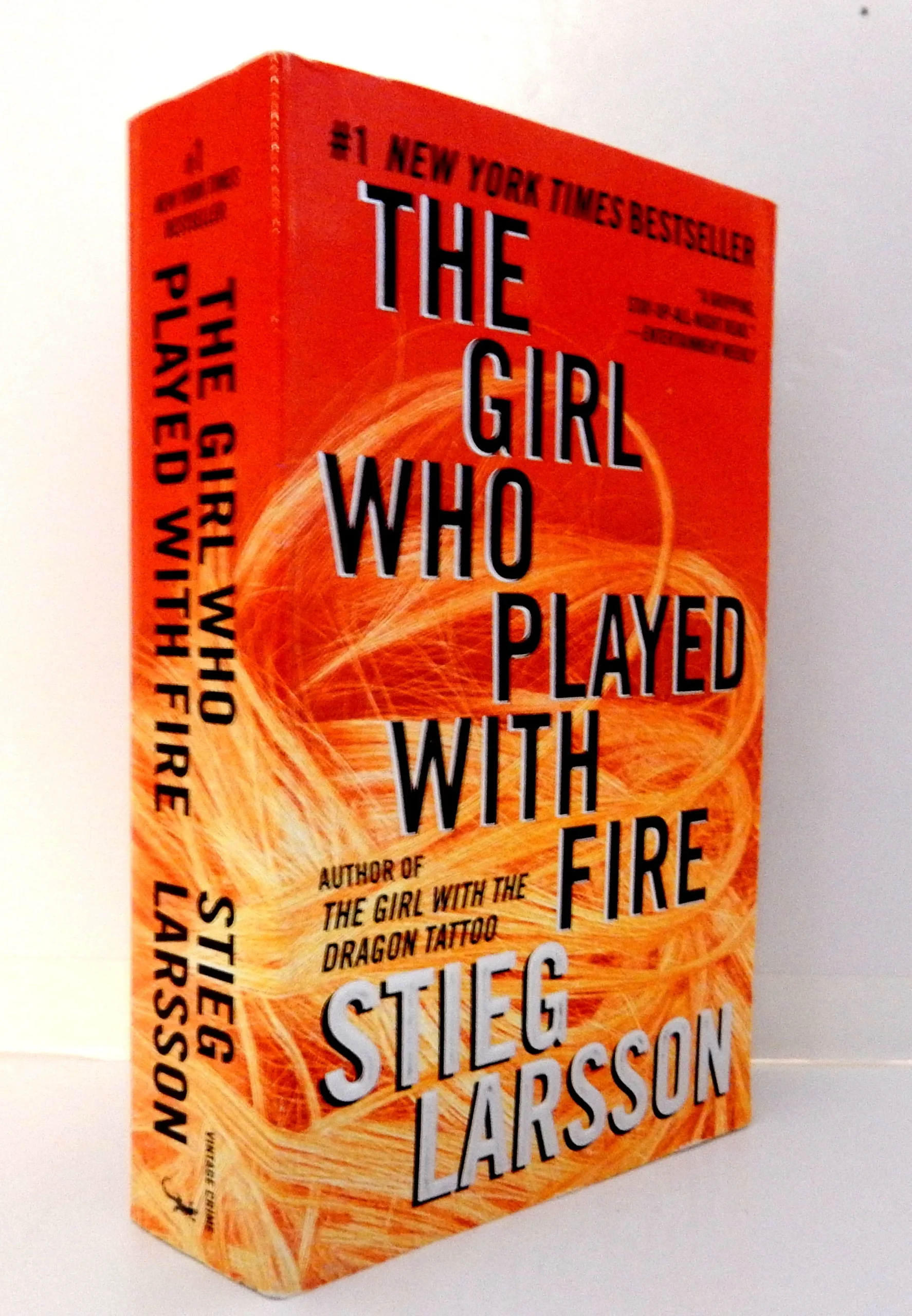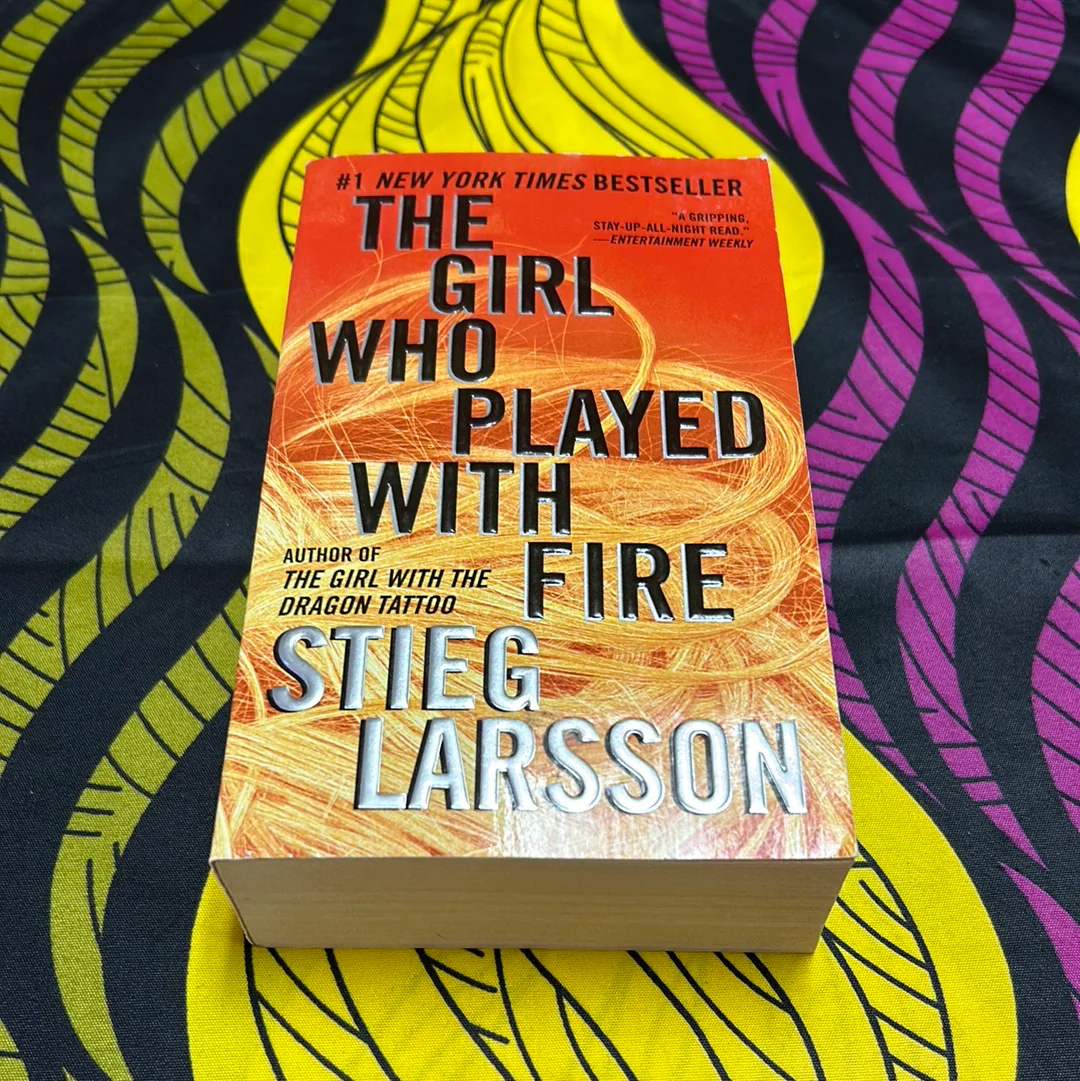The Girl Who Played with Fire by Stieg Larsson has left me utterly spellbound. I stumbled upon this gem in a quaint bookshop while wandering through Stockholm’s cobblestone streets last month. The cover, adorned with a fiery dragon tattoo, instantly caught my eye. As a long-time fan of Nordic noir, I couldn’t resist diving into this second installment of the Millennium trilogy.
From the very first page, I was catapulted back into the gritty world of Lisbeth Salander and Mikael Blomkvist. The story picks up where “The Girl with the Dragon Tattoo” left off, but this time, the stakes are even higher. Larsson’s masterful storytelling had me on the edge of my seat, frantically turning pages late into the night.
What struck me most about this book was the depth of character development, particularly for Lisbeth Salander. Larsson peels back the layers of her enigmatic personality, revealing a traumatic past that both horrified and captivated me. I found myself alternating between feeling fierce protectiveness towards Lisbeth and being in awe of her resilience and intelligence. There’s a scene where Lisbeth, despite being gravely injured, manages to outwit her pursuers using nothing but her wits and a nail gun. It’s moments like these that showcase Larsson’s ability to create tension that’s almost unbearable.
The intricate plot, weaving together government conspiracies, sex trafficking, and personal vendettas, is a testament to Larsson’s skill as a writer. However, I must admit that at times, the sheer number of characters and subplots became overwhelming. I found myself flipping back to earlier chapters to keep track of all the connections. While this complexity adds richness to the story, it might be challenging for readers who prefer more straightforward narratives.
One of the book’s greatest strengths lies in its exploration of societal issues, particularly violence against women and institutional corruption. Larsson doesn’t shy away from depicting brutal scenes, which can be difficult to read but serve to highlight the gravity of these problems. There’s a particularly harrowing flashback sequence detailing Lisbeth’s institutionalization that left me feeling both angry and deeply moved.
Larsson’s writing style is direct and unembellished, which suits the gritty nature of the story perfectly. He has a knack for creating vivid, cinematic scenes that play out in your mind like a film. I was especially impressed by his ability to maintain suspense even in chapters focused on investigative journalism and computer hacking – topics that could easily become dry in less skilled hands.
Reading “The Girl Who Played with Fire” has reinforced my belief in the power of fiction to shed light on real-world issues. It’s made me more aware of the insidious nature of institutional abuse and the importance of investigative journalism in uncovering truth. I found myself researching Swedish politics and social services after finishing the book, eager to understand more about the context in which the story is set.
There were moments when the violence depicted in the book felt almost too much to bear. I had to put it down several times to catch my breath. Yet, I always found myself drawn back in, compelled by the need to see justice served and to unravel the mysteries surrounding Lisbeth’s past.
One of my favorite aspects of the book is the way Larsson subverts traditional gender roles. Lisbeth is far from a damsel in distress – she’s a fierce, complex antihero who often outsmarts her male counterparts. Meanwhile, Blomkvist, while certainly heroic in his own right, often finds himself relying on Lisbeth’s skills and intelligence. This dynamic felt refreshing and added another layer of depth to their relationship.
The book’s pacing is relentless, especially in the latter half. I found myself holding my breath during the climactic confrontation, my heart racing as if I were right there alongside the characters. Larsson’s ability to maintain this level of tension throughout such a lengthy novel is truly impressive.
However, I did find some of the technical details about computer hacking and financial transactions to be a bit dense. While they add authenticity to the story, there were moments when I felt bogged down by the jargon. That said, these sections were balanced out by the more action-packed sequences, creating a nice rhythm to the narrative.
One of the most memorable passages for me was Lisbeth’s internal monologue as she grapples with her past and her place in society. Her thoughts on trust and betrayal resonated deeply with me, making me reflect on my own relationships and the walls we build to protect ourselves.
“The Girl Who Played with Fire” has left an indelible mark on me. It’s not just a thrilling crime novel; it’s a searing commentary on societal ills and a character study of one of the most fascinating protagonists I’ve encountered in literature. I find myself thinking about Lisbeth Salander long after turning the final page, wondering what I would do in her shoes.
I wholeheartedly recommend this book to anyone who enjoys complex, thought-provoking thrillers. However, I would caution sensitive readers about the graphic depictions of violence. This isn’t a light read by any means, but for those willing to delve into its dark depths, it offers a rewarding and unforgettable experience.
In the end, “The Girl Who Played with Fire” has rekindled my passion for Nordic noir and left me eager to complete the trilogy. Larsson’s legacy lives on in these pages, challenging readers to confront uncomfortable truths and root for an unlikely hero. As I place the book back on my shelf, I can’t help but feel a mix of satisfaction and anticipation – satisfied by the journey I’ve just completed, and excited for the final installment that awaits.